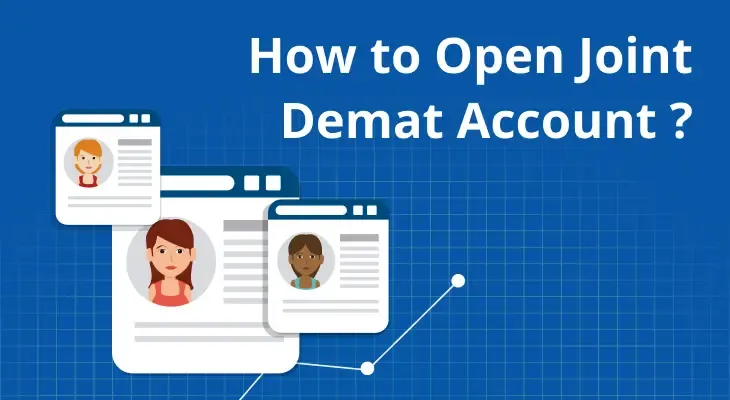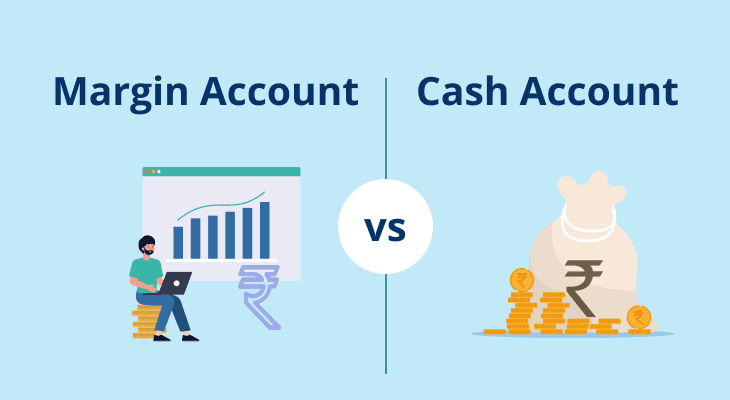
How to Open a Joint Demat Account?
In today's digital world, investing in the Indian stock market has become more accessible and convenient than ever before. As a result, many individuals are exploring joint investments with their spouses, family members, or business partners. To facilitate such ventures, financial institutions offer the option of a joint Demat account.
In this article, we will talk about the rules, benefits, and step-by-step process of opening a Joint Demat account online in India. By the end of this guide, you will have a clear understanding of how to embark on your joint investment journey seamlessly.
How to Open a Joint Demat Account?
Opening a joint Demat account is a simple process, especially with the convenience of online platforms. By following these steps, you can get started with your joint investment venture:
Step 1: Choose A Reliable Depository Participant (DP)
Select a reputable DP to open your joint Demat account. Banks, financial institutions, and brokerage firms often serve as DPs. Ensure they offer online account opening services for convenience.
Step 2: Review Joint Demat Account Rules
Before proceeding, familiarise yourself with the joint Demat account rules provided by your chosen DP. These rules will outline the rights, responsibilities, and procedures for managing the account jointly. Understanding these guidelines will ensure a smooth and efficient investment experience for all joint holders.
Step 3: Access Online Account Opening Portal
Most financial institutions have user-friendly websites that guide you through the account opening process. Look for the option to open a "Joint Demat Account" and click on it to initiate the procedure.
Step 4: Fill In The Account Opening Form
The form will prompt you to provide essential details such as the names of the joint holders, their contact information, PAN, Aadhar number, and other KYC (Know Your Customer) documents. Ensure that all the information provided is accurate and up-to-date.
Step 5: Submit KYC Documents
Both joint holders must submit identity proof, address proof, PAN card, and passport-sized photographs. Online platforms often allow you to upload scanned copies of these documents for verification.
Step 6: Complete In-Person Verification (IPV) Online
To ensure the authenticity of the account opening, you and your joint holder(s) will need to complete the In-Person Verification (IPV) process. Many DPs offer the option of IPV through video verification, where you interact with a representative via a video call, saving you the trouble of visiting their physical office.
Step 7: Choose The Type Of Joint Holding
While filling out the joint Demat account opening form, you will come across the option to choose the type of joint holding. There are two common types:
a. Anyone or Survivor: In this type of joint holding, if one of the joint holders passes away, the surviving holder automatically becomes the sole owner of the account and the securities therein.
b. Jointly: In this type of joint holding, both account holders have equal rights over the securities, and their consent is required for any transactions.Step 8: Nominate A Beneficiary (Optional)
Consider nominating a beneficiary for a smooth transfer of securities in case of unfortunate events.
Step 9: Fund The Joint Demat Account
Once verified, transfer funds to the account and start investing.
Can a Demat Account Be Joint?
Yes, a Demat account can be joint. A joint Demat account allows two or more individuals to be joint holders of the account. It is an excellent option for family members, couples, or business partners who want to pool their resources and invest together. The joint holders have equal rights and responsibilities over the securities held in the account. m.Stock does not provide Joint Demat account facility.
What Is a Joint Demat Account?
A joint Demat account is a single Demat account held by two or more individuals, known as joint holders. Each joint holder has equal ownership of the securities held in the account, and they can operate the account jointly. This means that all joint holders can buy, sell, or transfer securities in the account. A joint Demat account can be opened with family members, such as spouses, or business partners.
Benefits of Having a Joint Demat Account
Investing through a joint Demat account offers several advantages for the joint holders: Collaborative Investments: A joint Demat account fosters collaboration between joint holders, enabling them to pool resources and make well-informed investment decisions together.
Convenience And Shared Management
All joint holders have equal access to the joint Demat account, simplifying the investment management process.
Contingency Planning
With the "Anyone or Survivor" holding type, the surviving joint holder automatically becomes the sole owner of the account, ensuring a smooth transition in case of the demise of one account holder.
Family Investment Management
A joint Demat account is particularly useful for family members, as it allows them to track and manage investments from a single account.
Easy Asset Transfer
In case of the unfortunate event of one joint holder's demise, transferring securities to the surviving holder's name is a straightforward process, bypassing legal complexities.
Conclusion
Investing in the Indian stock market through a joint Demat account can be a rewarding and efficient way to achieve financial goals collaboratively. The online account opening process has made it more accessible and hassle-free for individuals to open joint Demat accounts from the comfort of their homes. By choosing the right depository participant, understanding the joint Demat account rules, and following the step-by-step process, you can embark on a successful joint investment journey with your partners or family members.
Remember that investing in the stock market involves inherent risks, and it is essential to conduct thorough research and seek professional advice when making investment decisions. With a joint Demat account, you and your joint holders can combine resources, share responsibilities, and navigate the stock market together for a prosperous financial future.
FAQ
Can a joint Demat account be opened online?
Yes, you can open a joint Demat account online. Many depository participants and brokerage firms offer online account opening services to make the process seamless for investors.
Can a second Demat account be opened?
Yes, it is possible to open a second Demat account if required. Investors may choose to have multiple Demat accounts with different DPs for various investment purposes.
Who can manage a shared depository account?
All joint holders of a shared depository account have equal rights to manage the account. They can conduct transactions independently or jointly, depending on the type of joint holding selected.
What happens to a joint Demat account in the event of the account holder's death?
In a joint Demat account with the "Anyone or Survivor" holding type, if one of the joint holders passes away, the surviving holder automatically becomes the sole owner of the account and its securities.
Is it possible to add a joint holder to an existing Demat account?
Yes, you can add a joint holder to an existing Demat account by submitting a modification form and the necessary documents to your depository participant.
What is the minimum amount of funds needed to create a Demat account?
The minimum balance requirement for a Demat account may vary depending on the depository participant or brokerage firm. Some offer zero-balance accounts, while others may have minimum deposit requirements. It is advisable to check with the respective DP for specific details before opening a trading account.


